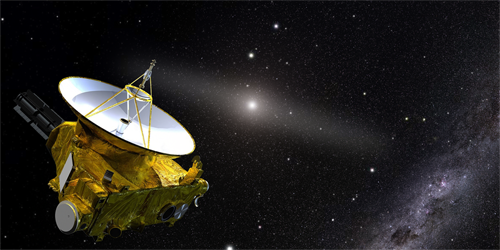Dark Matter Could Cause Excess Optical Background
If you could switch off the Milky Way’s stars and gaze at the sky with a powerful telescope, you’d see the cosmic optical background (COB)—visible-wavelength light emitted by everything outside our Galaxy. Recent studies by the New Horizons spacecraft—which, after its Pluto flyby, has been looking further afield—have returned the most precise measurements of the COB yet, showing it to be brighter than expected by a factor of 2. José Bernal and his colleagues at Johns Hopkins University in Maryland propose that this excess could be caused by decaying dark matter particles called axions [1]. They say that their model could be falsified or supported by future observations.
Comparing COB measurements to predictions provides a tool for testing hypotheses about the structure of the Universe. But measuring the COB is very difficult due to contamination by diffuse light from much nearer sources, especially sunlight scattered by interplanetary dust. Observing from the edge of our Solar System, New Horizons should be unaffected by most of this contamination, making the measured excess brightness a tool for improving our understanding of galaxy evolution.
Researchers have attributed the excess to the glow of unknown galaxies and extra-galactic stars, but Bernal and his colleagues show that it could be explained by the decay of axions if these hypothetical particles exhibit a particular axion-photon coupling strength. According to the team’s computations, axions having a mass between 8 and 20 eV could account for the excess flux if they convert to photons at a rate of ∼1/1015 years. The researchers say that their work, as well exploring a potential explanation for the COB excess, motivates future searches for dark matter with these characteristics.
–Rachel Berkowitz
Rachel Berkowitz is a Corresponding Editor for Physics Magazine based in Vancouver, Canada.
References
- J. L. Bernal et al., “Cosmic optical background excess, dark matter, and line-intensity mapping,” Phys. Rev. Lett. 129, 231301 (2022).




